Milford Sound was the reason we reached as far as Te Anau. The glowworms were a beautifful addition to our journey of course, but today's trip was even more spectacular.
It started with the way from Te Anau to Milford Sound. It is about 120 km long which takes 2,5 hours driving without stops for photos, but it is full of turns and interesting stops and lookouts and as a result I think it took us more than 3 hours with all the stops we did. Our scheduled trip was for 12.15 pm but we aimed to start as soon as possible. We were on our way something before 8.30, but first stop was in the centre of Te Anau for fuel and supplies, as there is nothing in between or at Milford Sound. The first part of the road skimms Lake Te Anau through farmland. Te Anau Downs (~ 30km) offered such a beautiful view to the lake, but we only saw it on the way back. One of our best stops on the way to Milford Sound were the Mirror Lakes (~60km) which mirrored the magnificent mountains across the valley, as their name indicates. So early in the morning, it was beautiful to see the mountains and even the moon on the calm water surface!
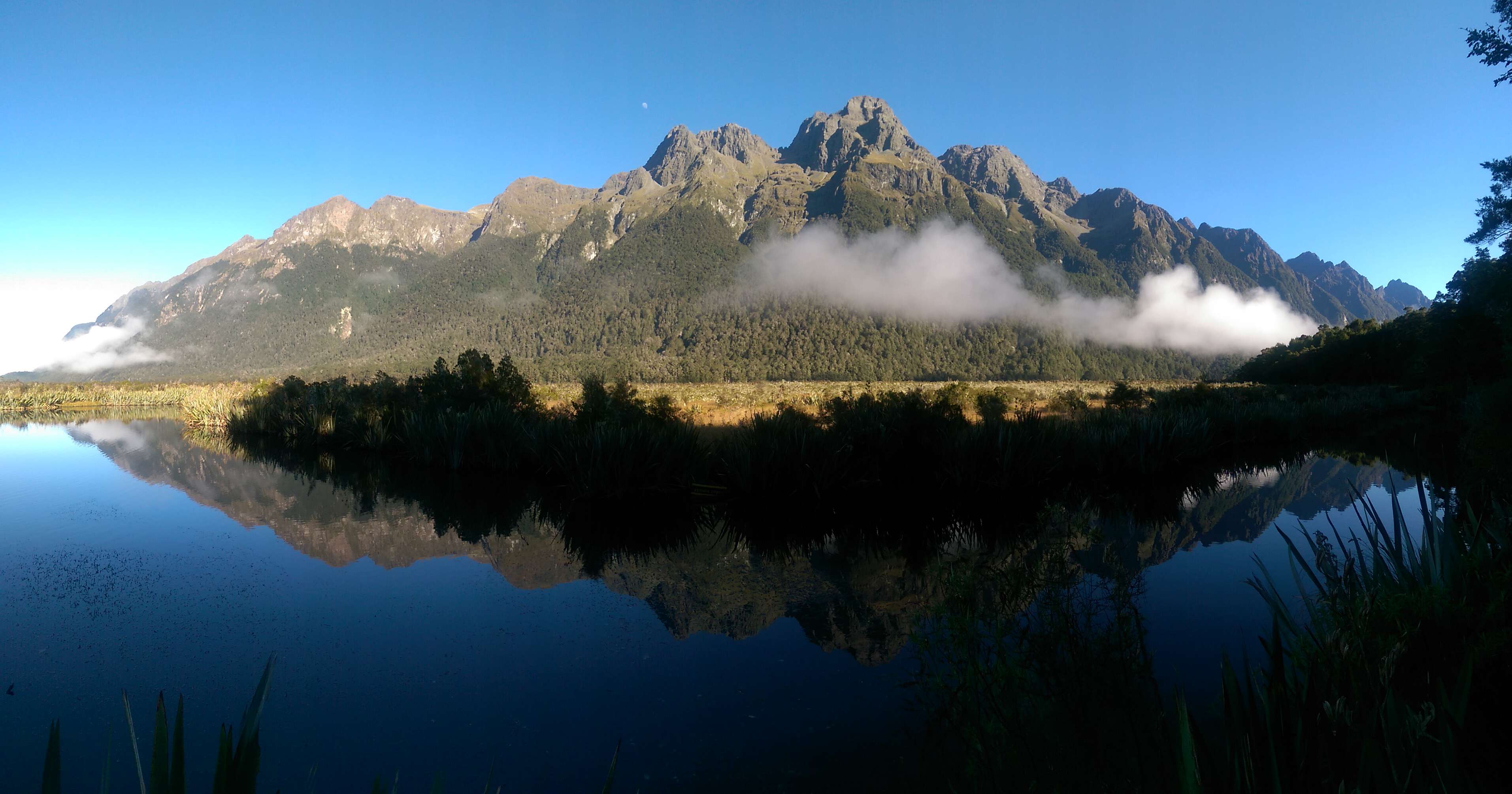
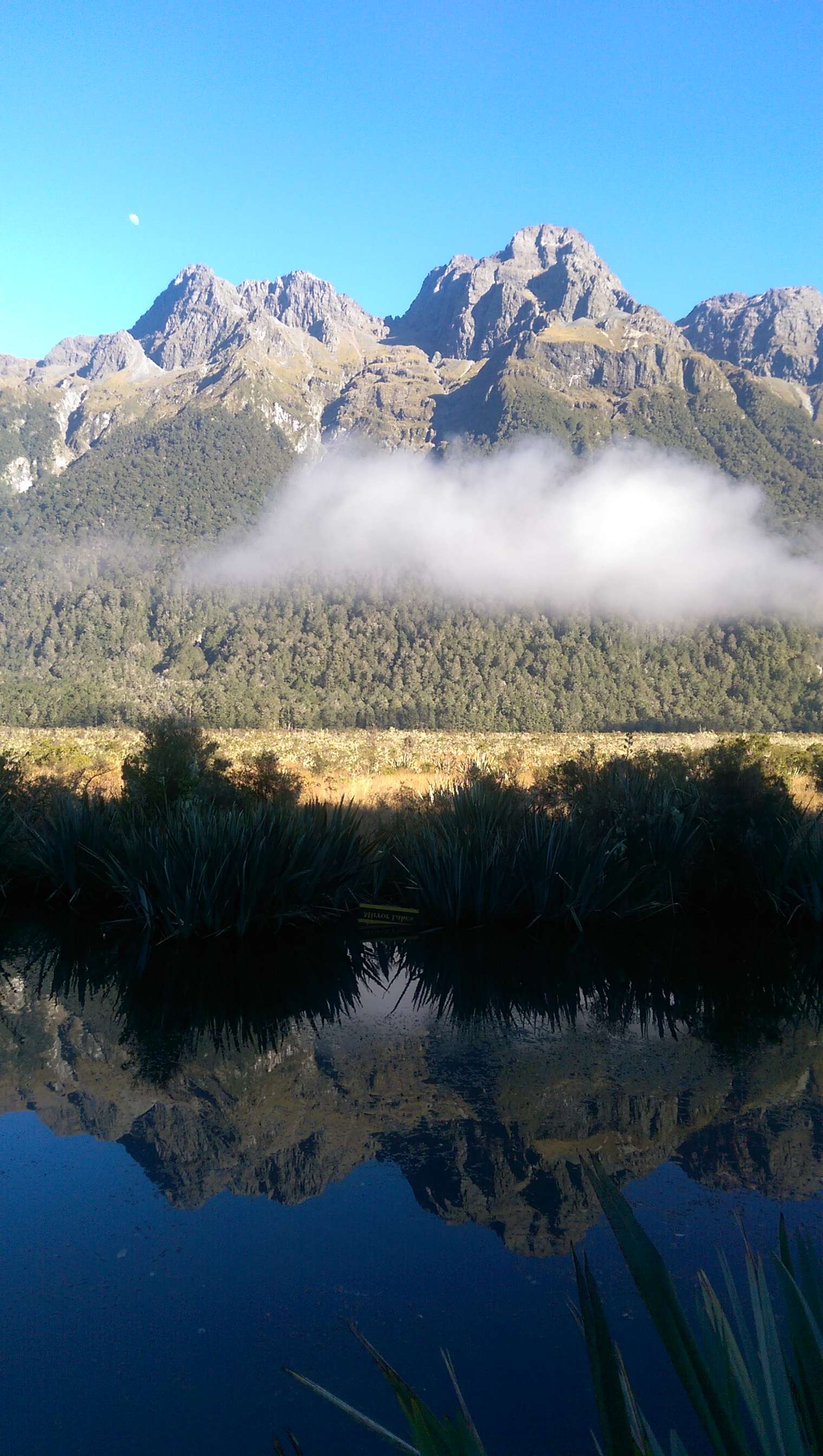
Another stop that is worth mentioning was the Hollyford Valley Lookout or Pop's View with spectacular views to the valley down below.
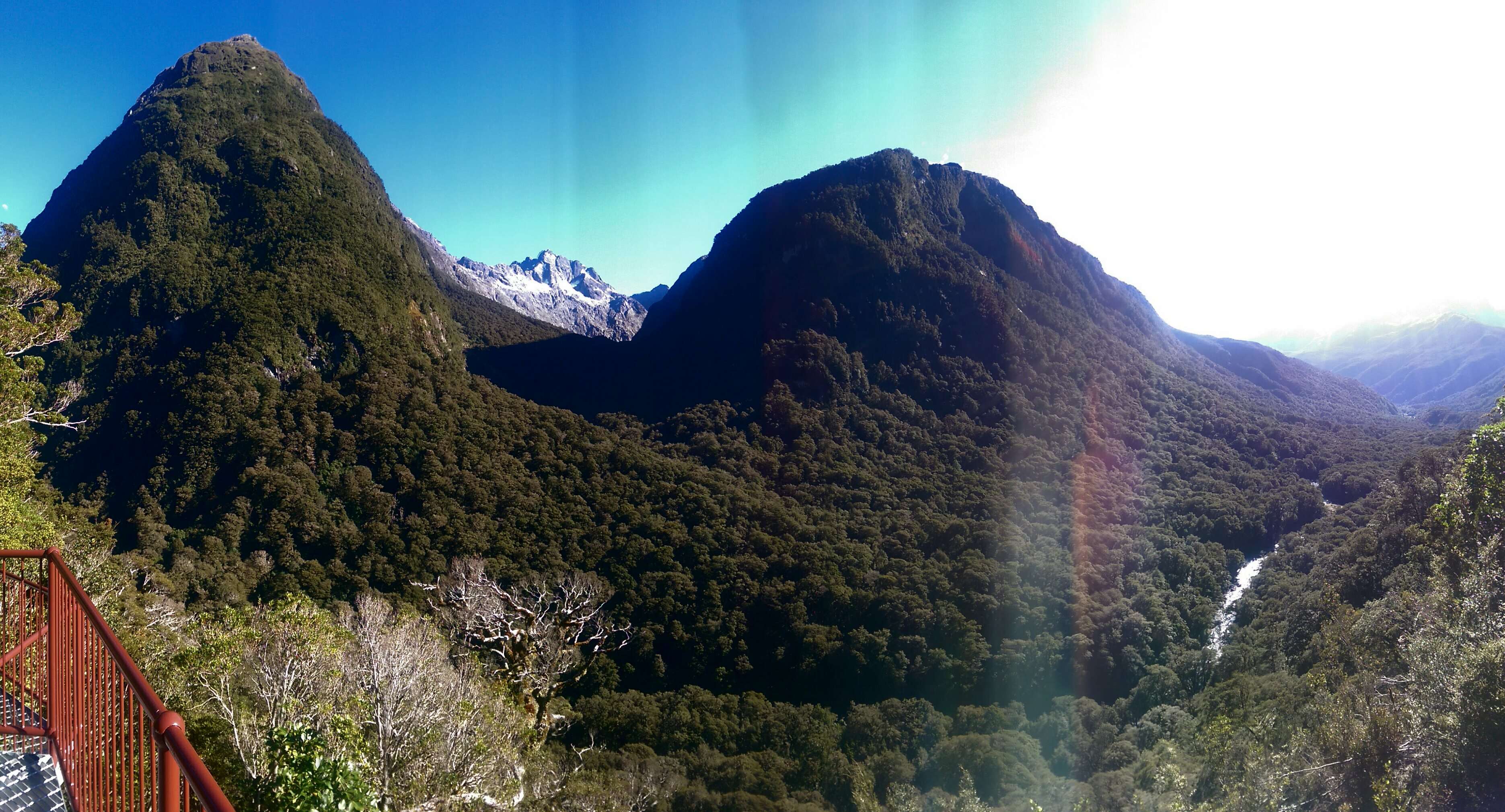
The way to Milford goes through Homer Tunnel, which was a strange experience: a one lane, dark tunnel, 1.2km long, built through sheer rock and dripping water. Dominik, used to Swiss tunnels, was so surprised at it. So after about 3 hours drive we arrived at the end where Milford Sound was waiting for us.



Another stop that is worth mentioning was the Hollyford Valley Lookout or Pop's View with spectacular views to the valley down below.

The way to Milford goes through Homer Tunnel, which was a strange experience: a one lane, dark tunnel, 1.2km long, built through sheer rock and dripping water. Dominik, used to Swiss tunnels, was so surprised at it. So after about 3 hours drive we arrived at the end where Milford Sound was waiting for us.

It is called a Sound, but as we found out that is an alternative fact: it is really a fjord. Sound means a formation caused by a river but a fjord is a formation caused by glaciers. Its current name comes from Milford Haven in Wales, and in Maori the name of the place is Piopiotahi, after a local, but now extinct, bird called piopio. Piopiotahi means 'a single piopio' and the legend says that Maui was trying to win immortality for mankind, but he died in the attempt and a piopio was said to have flown in this area in mourning for Maui's death.
Having been already in Norway and having seen a sample of their fjords I can reassure everybody they look similar. Magnificent in size, a flood of green and blue and an amazing sight. We took a nature cruise, which meant a bit of a smaller boat and attention to small natural aspects of the area. The trip included several stops and spots, the most interesting of which were the following:
1. The Lady Bowen Falls, the higher of the two permanent waterfalls in the area. The water falls 161m from a hanging valley and the falls provide all the drinking water and the electricity to the people living in Milford Sound. They are named after the wife of one of New Zealand's early governors.
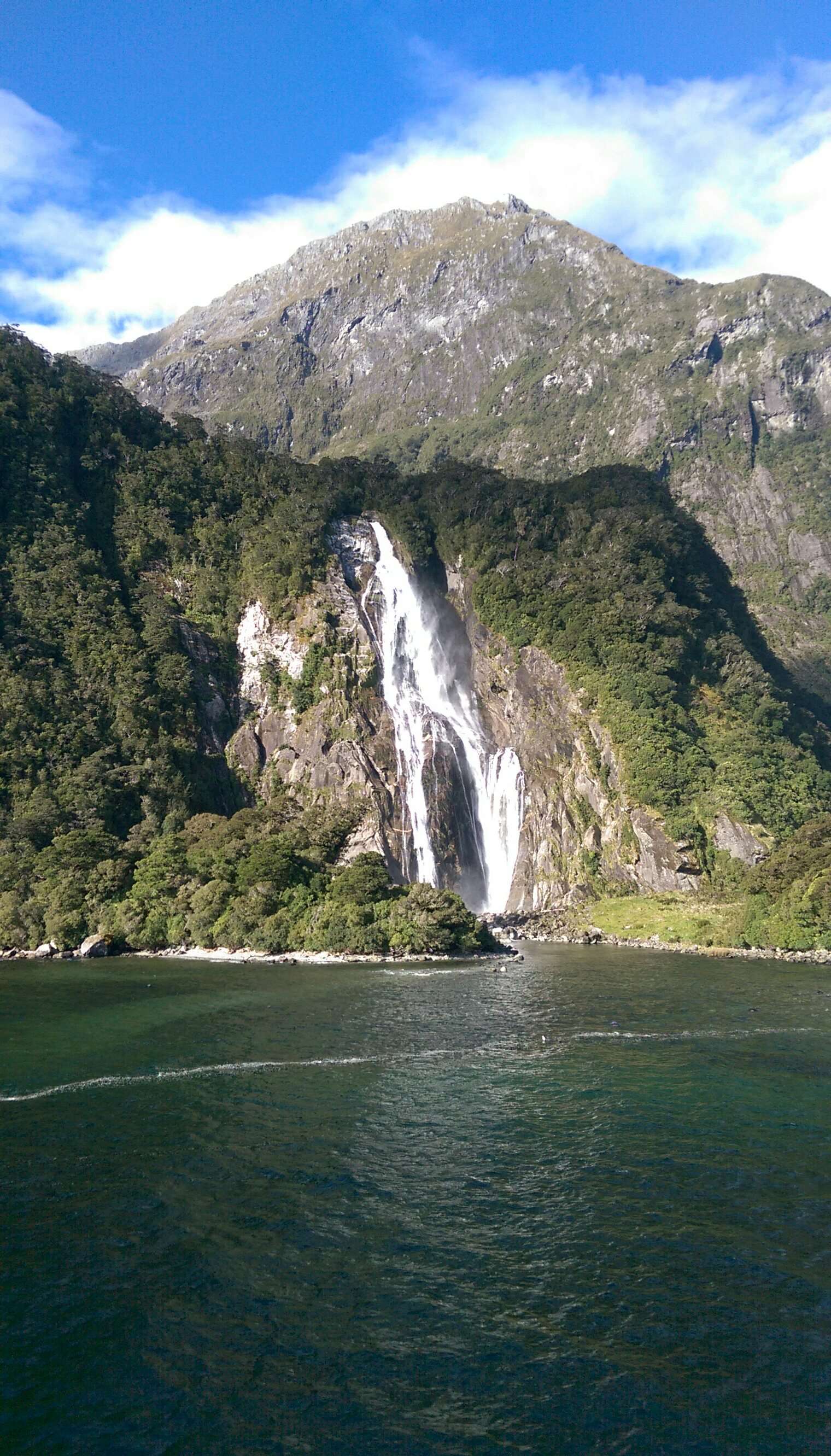

2. The Mitre Peak or Rahotu in Maori, a spectacular 1692m high mountain rising from the waters of Milford Sound. It is one of the highest mountains in the world to rise directly from the ocean floor. Its english name comes from its shape, which resembles a Bishop's mitre.
3. The Seal Rock, one of the few areas in the fjords where the southern fur seal is able to climb out of the water onto the rocks. There we saw a couple of young adult male seals lounging in the sun.


4. Getting sprayed from glacier water coming down a spectacular waterfall. The Stirling Falls are 155 meters high and are the second permanent waterfall in the area. The name comes from Captain Stirling, one of the early explorers in the area. Wear a raincoat and go outside in the front of the boat! The water that touched us had never ever before touched any other person!
5. The hanging garden where carrots were growing at the cliff wall
6. Spectacular overhanging cliffs at the Lion Mountain
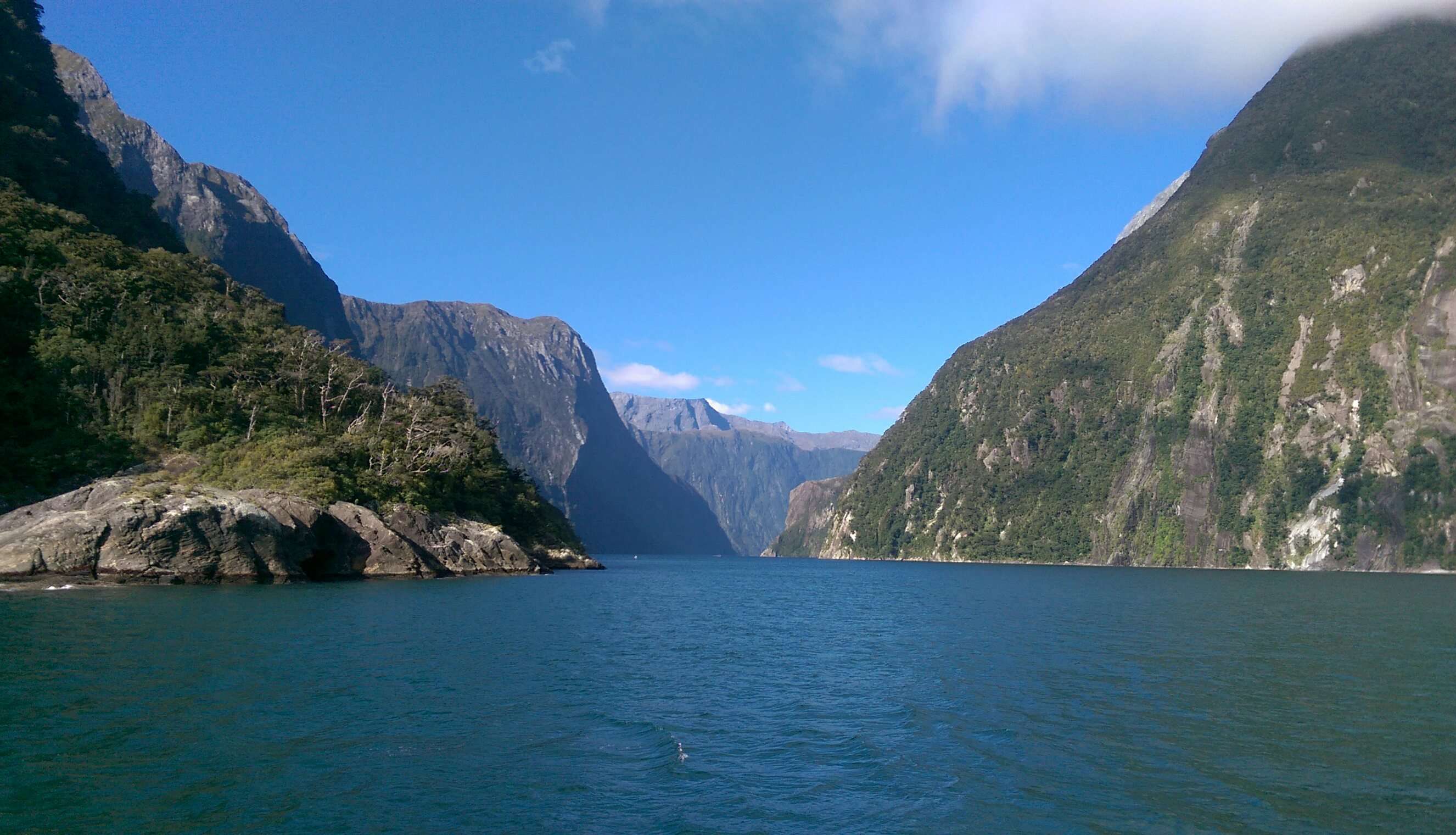

The last stop was at the Milford Discovery Centre and Underwater Observatory: Decending 64 steps (10m) below sea level and being in an aquarium-type cylinder, where inside the glass is us and outside the fish. Due to the special circumstances, this being 1. the dark, almost black, waters on the top, coming from fresh water carrying resins from the trees and floating on top of the salt water (as it is lighter), letting almost no light through and 2. the calm waters below due to the shape of the valley, the sea at this level resembles the environment of a deep sea ocean. Here we could see how the world under the water level evolves with black corals that are really white, and starfish and other fish looking at us from their natural habitat.
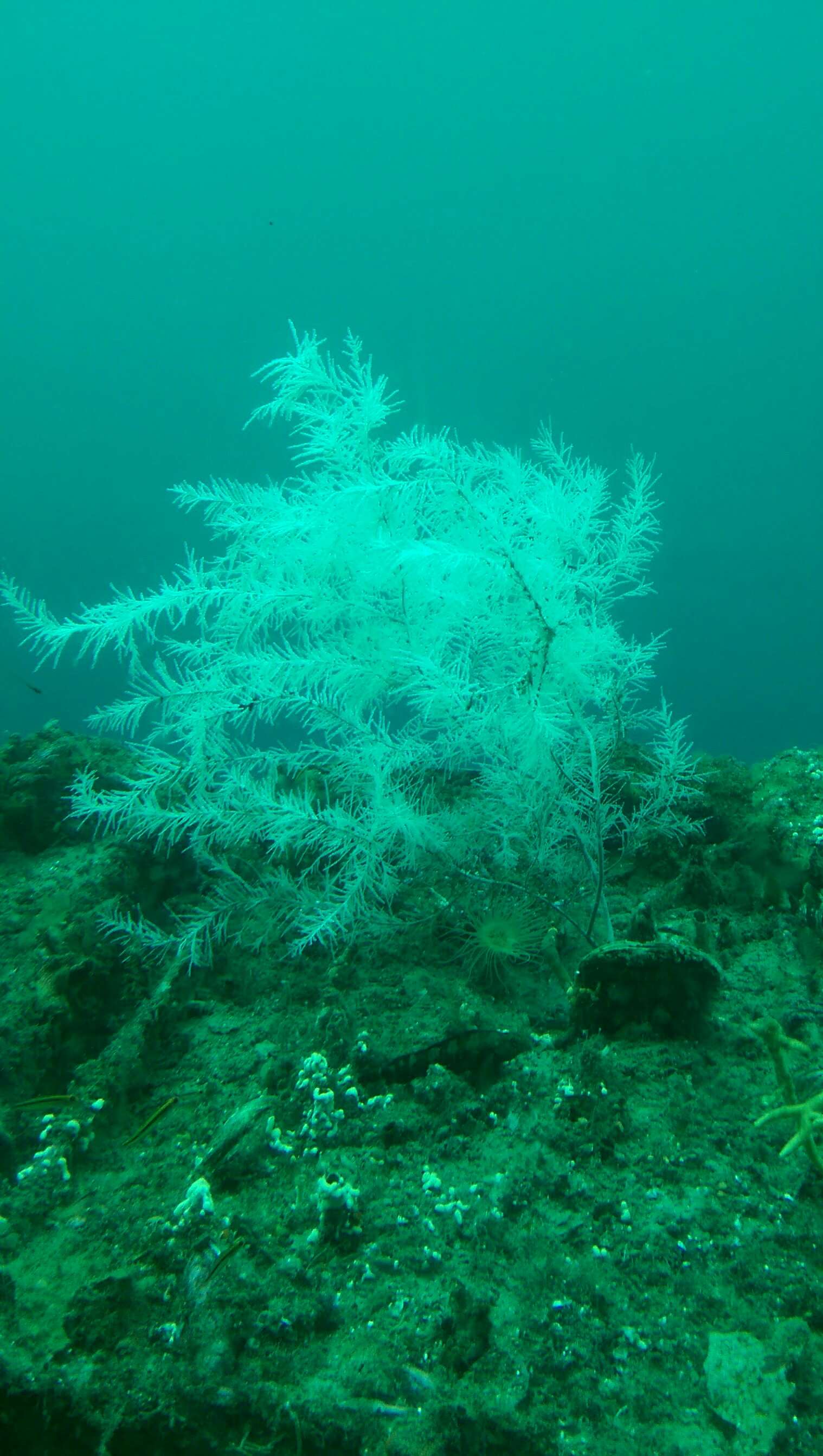
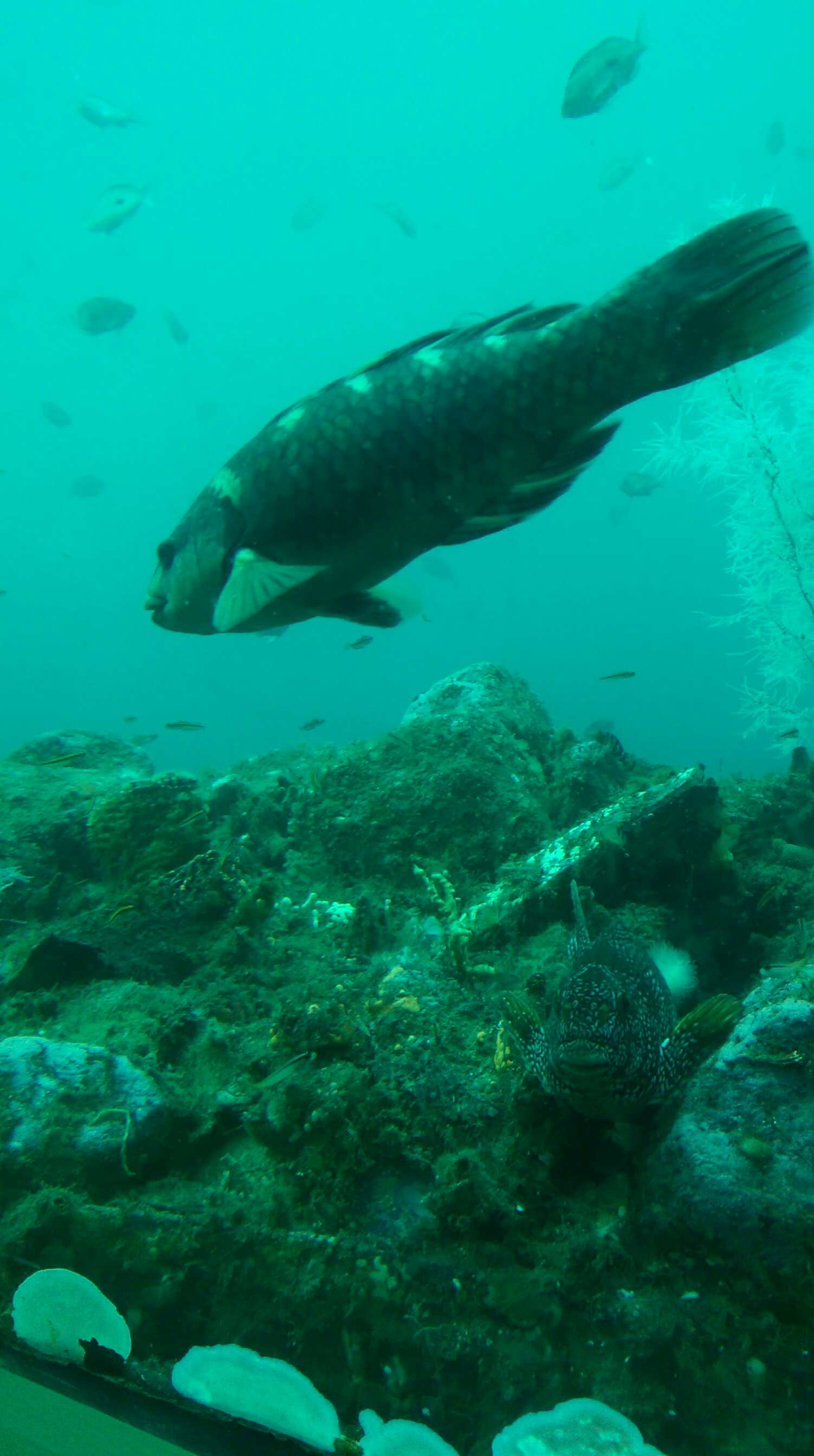


The day was extraordinary. Worth every single minute, but we have to admit we were extremely lucky: We had a beautiful sunny and cloudless day. Milford Sound is known to be the wettest inhabitted area in New Zealand. According to statistics it rains here about 200 days per year. The people in Milford Sound say that rain is waterfalls in the making. Well we chose one of the other days! Also at the sea habitat, our guide was saying he has only once before seen so clear water as that day.
At the shore, though, there were sandflies, as everywhere at the coast of New Zealand. It is at this point that I learnt the legend behind these annoying creatures. The legend says that the fjords and all of New Zealand were carved by Tuterakiwhanoa, the youngest of the two main gods of the Maori tradition. When he finished he called his parents and siblings to see his creations and all were amazed. When his sister Hinemuitepo, the goddess of the underworld, saw the beauty created by her brother, she became fearful that humans would not want to leave such a paradise. So she created Te Namu (the sandflies) as a reminder of human mortality and a warning not to linger around this beautiful place too long. And as such, wherever you find a beautiful place, there are also sandflies present.
PS: I really like Maori mythology, as you might have noticed, so be prepared for some more follow-ups in future posts.